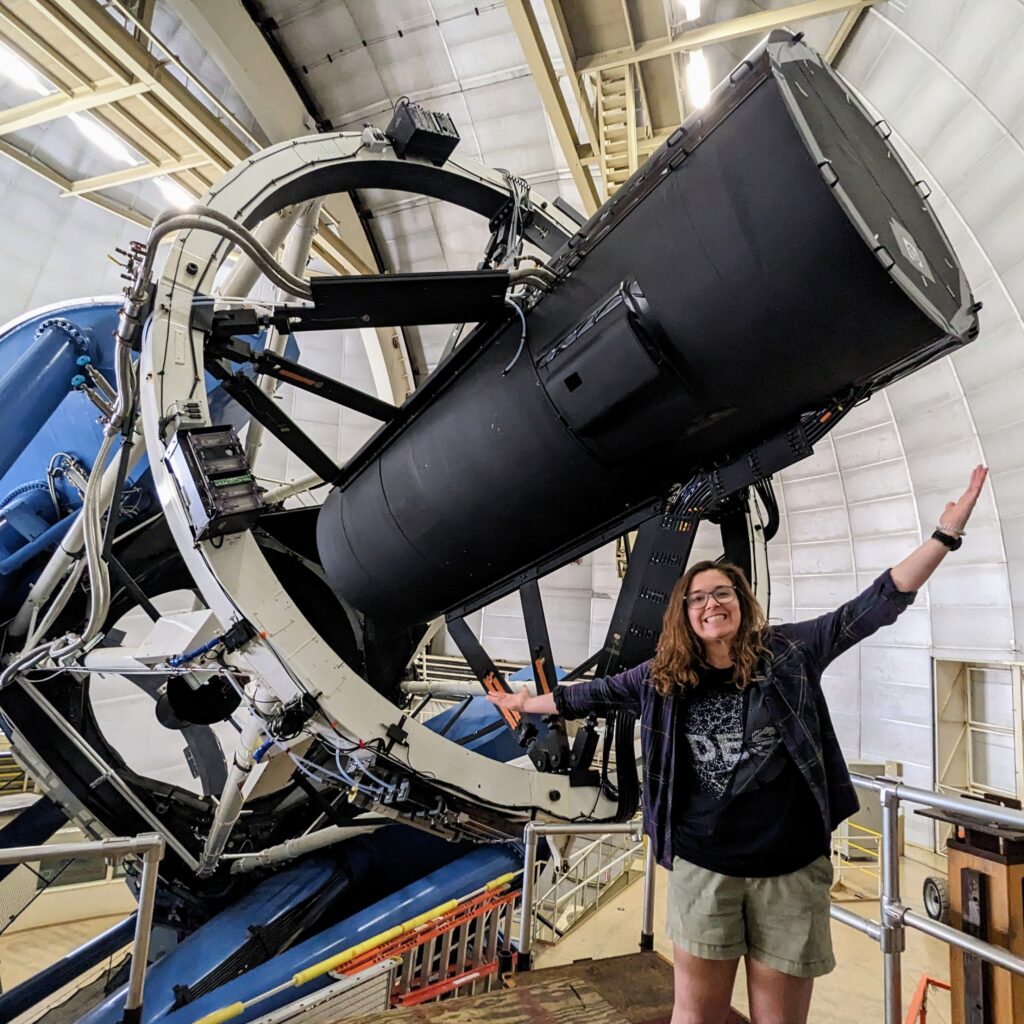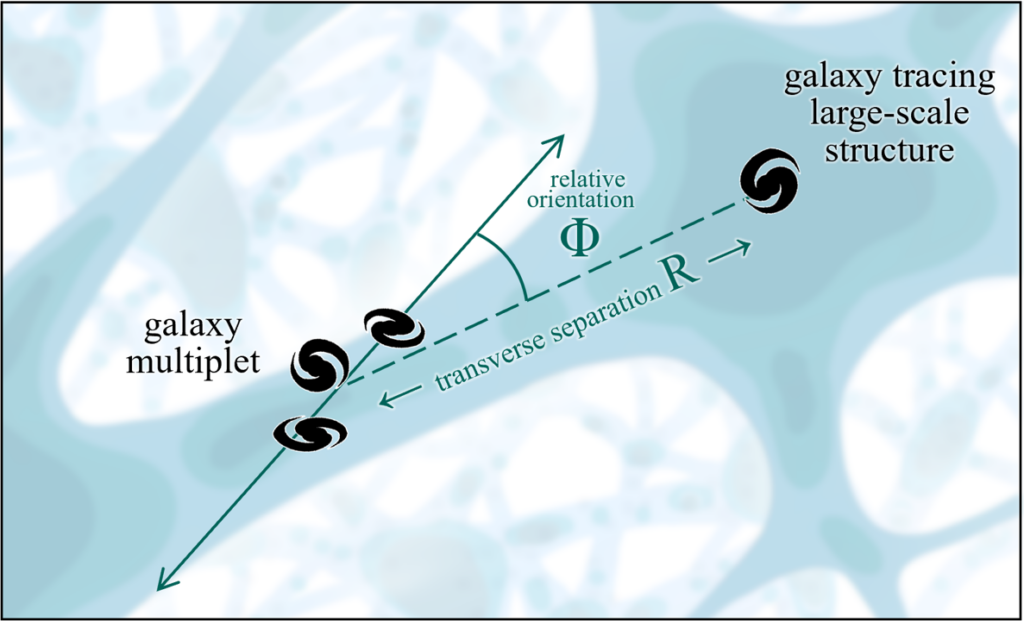Joan Najita (NOIRLab)
 A graduate student at the Harvard-Smithsonian Center for Astrophysics, Claire Lamman studies the orientations and alignments of galaxies and what they can tell us about cosmology and the cosmic web. She is also a talented artist and the recipient of a National Academies of Sciences Excellence in Science Communication Award for work that includes the DESI “5000 Eyes” planetarium film and “doodle summaries” that translate the complexity of scientific papers for the public. We sat down with Claire to learn more about her recent astrophysics research on what tiny groups of galaxies can tell us about the Universe.
A graduate student at the Harvard-Smithsonian Center for Astrophysics, Claire Lamman studies the orientations and alignments of galaxies and what they can tell us about cosmology and the cosmic web. She is also a talented artist and the recipient of a National Academies of Sciences Excellence in Science Communication Award for work that includes the DESI “5000 Eyes” planetarium film and “doodle summaries” that translate the complexity of scientific papers for the public. We sat down with Claire to learn more about her recent astrophysics research on what tiny groups of galaxies can tell us about the Universe.
Q: Can you tell us about your recent paper?
A: I was curious to see how the orientations of tiny groups (or “multiplets”) of galaxies correlate with the largest structures in the Universe (a.k.a. the cosmic web). It turns out that the orientations of multiplets tend to point towards other galaxies, implying that their positions are aligned with the cosmic web (please see graphic below). All multiplets remember the same large-scale structure, regardless of the type of galaxies in them. This is cool because usually stuff on small scales seems to forget the cosmic web it originated from. This effect may offer a new way to map out the large-scale structures of the Universe.
Q: You mentioned that stuff on small scales usually forgets about the cosmic web. Why doesn’t that happen here?
A: While galaxy orientations tend to “forget” their history in a very general sense, here we show that some memory is in fact preserved! This is likely a result of how the galaxies formed. My mental picture is matter (gas, dust, galaxies) being channeled along cosmic filaments and their angular momentum in that direction is preserved in the motions (and therefore positions) of the galaxies relative to each other and to the densest nearby regions, the large clusters / nodes where filaments meet.

Q: Can we make a map of dark matter using your technique?
A: Yes! Or, more specifically, a map of the tidal forces created by dark matter. This is similar to how weak lensing makes a “map” of dark matter between us and distant galaxies.
Q: What drew your attention to this topic? And why multiplets in particular?
A: Initially I studied the orientations of galaxies as a source of error in cosmological surveys. (For example, we expect the intrinsic alignments of galaxies to bias measurements of redshift-space distortions for DESI.) But eventually I became interested in their underlying cause. It’s fascinating that things on relatively “small” scales (galaxies) can be connected to the largest structures in the universe!
Q: How does DESI help with this problem?
A: Because DESI measures the distances to galaxies, it helps us better determine which galaxies are close to each other along the line of sight. That helps us better identify multiplets and gives us better 3D information about their positions. These improvements help us find subtle correlations between galaxies and the cosmic web.
Q: What was your reaction to the results? Were you surprised?
A: Although I expected we would find some correlation, I was surprised at how clear the signal was! And I was also pleasantly surprised to find that we could detect a correlation in the most “difficult” sample: the faint, blue, distant galaxies. This is exciting because we do not see any evidence of alignment of these galaxies as individuals.
Q: What’s next on your horizon?
A: Getting my PhD! I’m excited to graduate and start postdoctoral research, where I hope to collaborate with theorists and experts in galaxy dynamics in order to better understand the modeling and applications of multiplet alignment.
More information about Claire’s recent work is available in this doodle summary of the actual paper and in this Halloween lunch talk (Claire’s presentation begins at 35:15).